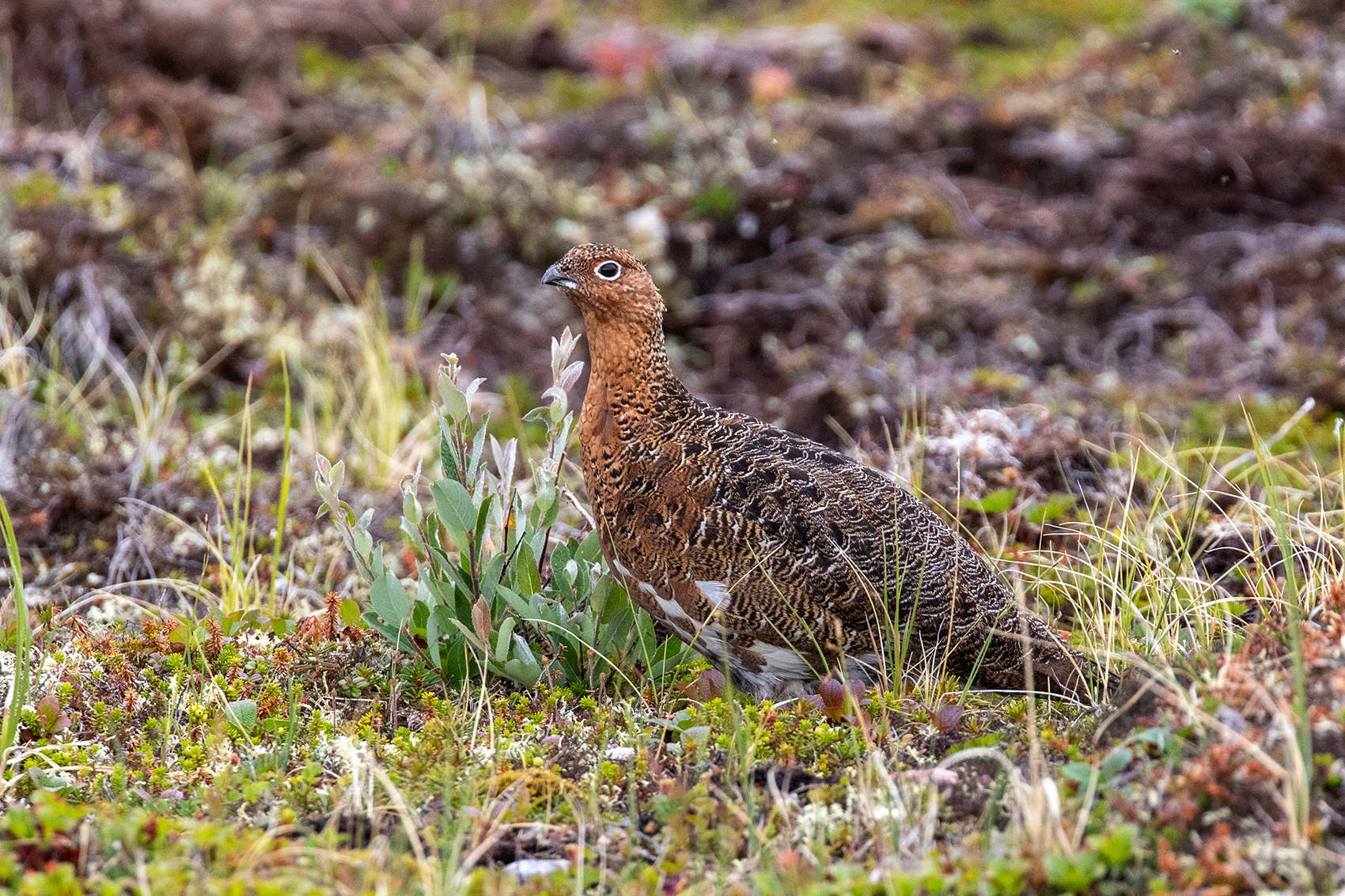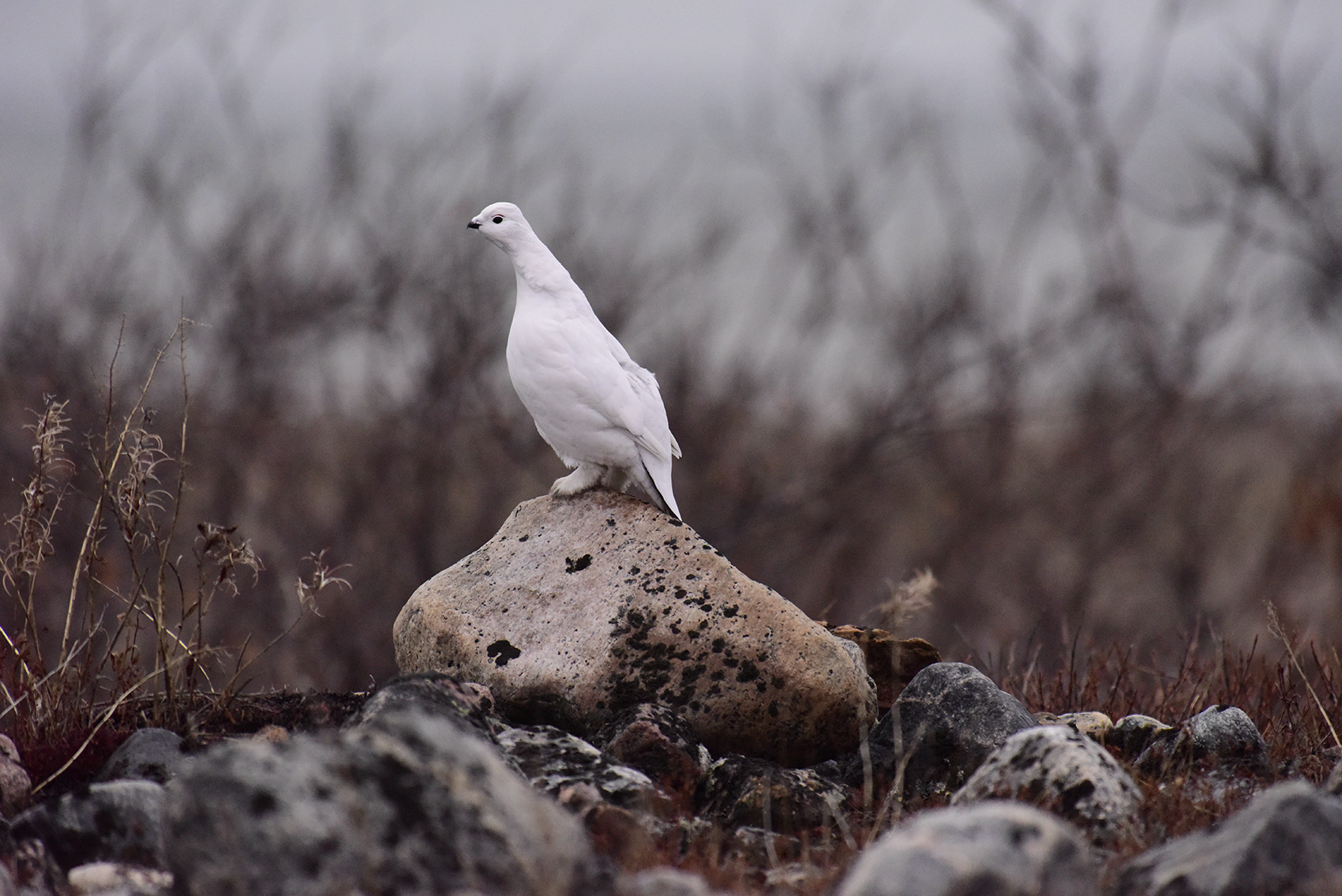Scientific name: Lagopus lagopus (Willow) and Lagopus muta (Rock)
Average length/height: 28-43cm (11-16 inches)
Average weight: Willow – 570g (1.25lb); Rock – 540g (1.2lbs)
Characteristics
Camouflage is their claim to fame, turning a snowy white in winter and a mix of red and browns in the summer. They can be hard to spot from 6 feet away, hiding well in the willows or snow depending on the season. Heavily feathered feet allow for walking on top of deep snow, like snowshoes, and to dig burrows in the snow to hide from the elements. With short tails, stout bill and plump bodies, they’re pretty cute. Red eyebrows distinguish breeding males from other birds. (The Cornell Lab, n.d.)
Territory/Geographical Locations
Ptarmigan live primarily in flat, wet areas with relatively low elevation and plenty of willow and shrubs. During breeding season, they live on the tundra and in western North America, Willow Ptarmigan migrate to areas above 6,000 feet during molting season which starts just before winter. In central and eastern Canada, they move south into the boreal forest. (The Cornell Lab, n.d.)
Population & Reproduction
Ptarmigan can form large flocks, hundreds of birds sometimes.
Once paired, a Willow Ptarmigan father helps raise young which can take up to seven months. Willow Ptarmigan territory can vary from three to 20 acres whereas Rock Ptarmigan can defend 10 to 100 acres. Ptarmigan males can sometimes have two female partners, but females rarely change mates. Females like to pick the males with the better eyebrow combs and those that display more energy in courtship rituals. Nests are made in the ground and their broods range from three to 13 eggs. (The Cornell Lab, n.d.)
There are plenty of both types of Ptarmigan in the world; around 8 million Rock Ptarmigan and 40 million Willow Ptarmigan.
Diet
Willow Ptarmigan eat a plant-based diet, snacking on leaves, twigs, berries, seeds and other floral matter. Rock Ptarmigan will eat spiders, insects and sometimes snails. Like humans they enjoy blueberries out on the tundra in abundance. They eat very slowly and mostly enjoy breakfast and a late lunch, but in summer will eat all day.










